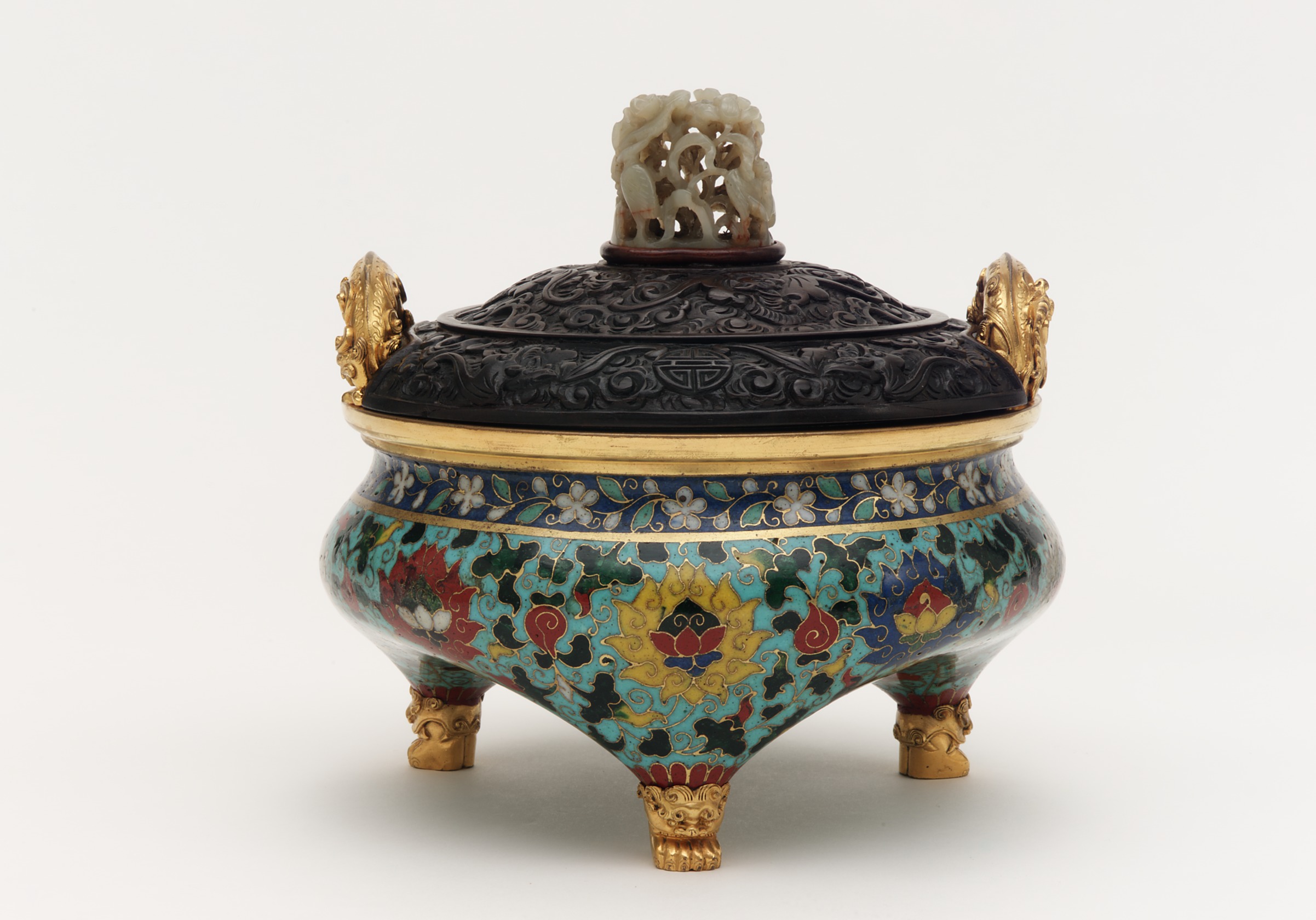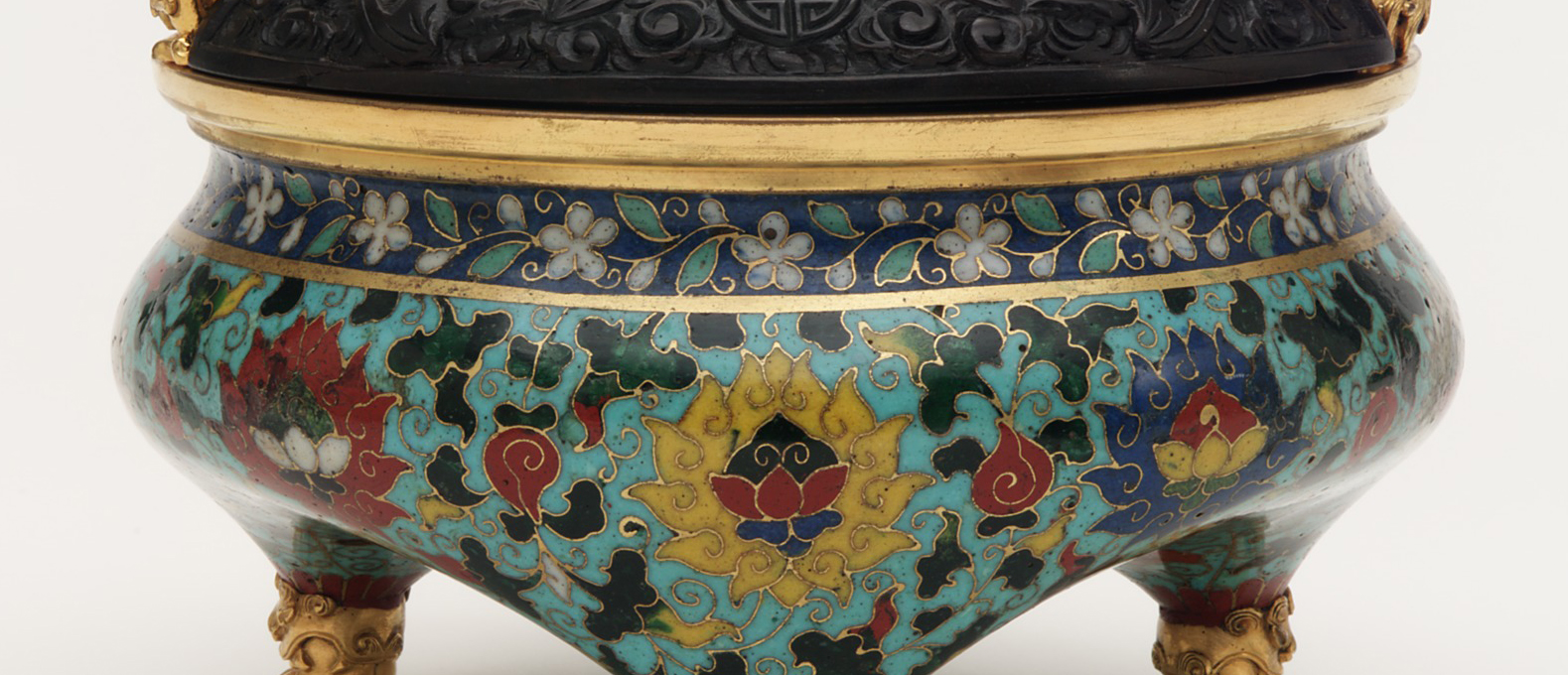cloisonné(cloy-zuhn-ay) a decorative method that uses small metal wires to outline shapes/designs on a piece of metal. The shapes (cloisons) are then filled with enamel that, when fired in a kiln or heated to a very high temperature, turns into a glass-like medium and creates bright and opaque areas of color.: a decorative method that uses small metal wires to outline shapes/designs on a piece of metal. The shapes (cloisons) are then filled with enamelan opaque (dark) paste that is used to add color to hard surfaces like metal. It turns into a glass-like texture, which also provides protection, when heat is applied. that, when firedthe act of heating pottery in a kiln. in a kilna type of oven for firing clay or porcelain to make ceramic ware. or heated to a very high temperature, turns into a glass-like medium and creates bright and opaque areas of color.
enamel: an opaque (dark) paste that is used to add color to hard surfaces like metal. It turns into a glass-like texture, which also provides protection, when heat is applied.
glazea thin, glass-like coating made of powdered rocks, minerals, ashes, and water. Applied correctly it makes a clay body impervious after firing. The colors of glaze are determined by the mineral oxides used and various aspects of the firing conditions.: a thin, glasslike coating made of powdered rocks, minerals, ashes, and water. Applied correctly it makes a clay body impervious after firing. The colors of glaze are determined by the mineral oxides used and various aspects of the firing conditions.
incensea material created from spices, flowers, and other natural elements that release scents (smells) when burned.: a material created from spices, flowers, and other natural elements that release scents (smells) when burned.
Silk Roadan ancient network of land and sea trade routes established during the Han dynasty (206 BCE–220 CE) that existed until the middle of the Ming dynasty (1368–1644). These trade routes stretched from China across Asia to the Near East, the Mediterranean, and East Africa.: an ancient network of land and sea trade routes established during the Han dynastya series of rulers from a single family. (206 BCE–220 CE) that existed until the middle of the Ming dynasty (1368–1644). Trade routes stretched from China across Asia to the Near East, the Mediterranean, and East Africa.
symbola shape or design that is recognizable and has a meaning associated with it.: a shape or design that is recognizable and has a meaning associated with it.








